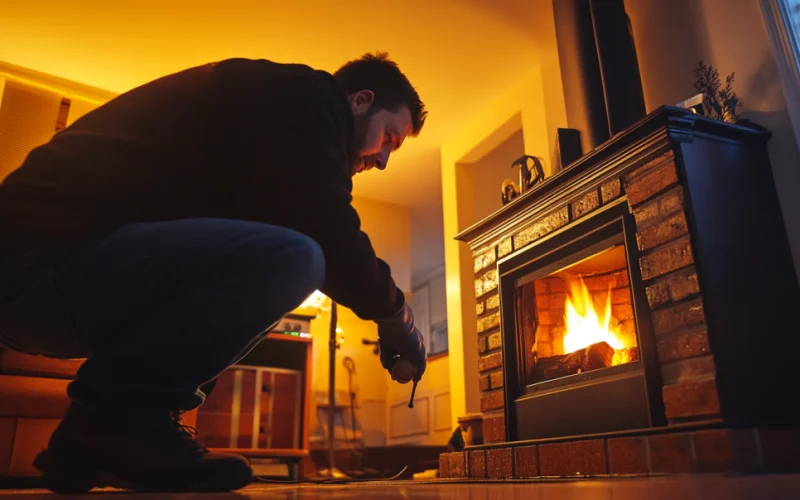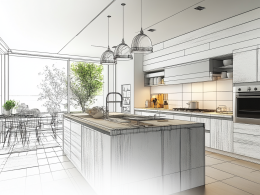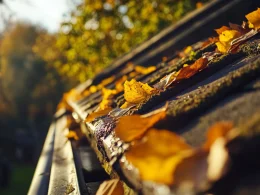Keeping your chimney in good shape is crucial for a safe and cozy home. Yet, many homeowners don’t know what a proper chimney inspection entails. It’s easy to overlook this important task, putting your family at risk.
I’m here to help you understand chimney inspections better. In this guide, I’ll walk you through the key steps of a thorough chimney check-up.
You’ll learn what to expect from different inspection levels and how to prepare for a chimney sweep visit.
By the end of this post, you’ll feel more confident about chimney maintenance. I’ll cover the inspection process, tools used, and why regular check-ups matter.
Let’s explain chimney inspections together!
Why Chimney Inspections are Necessary
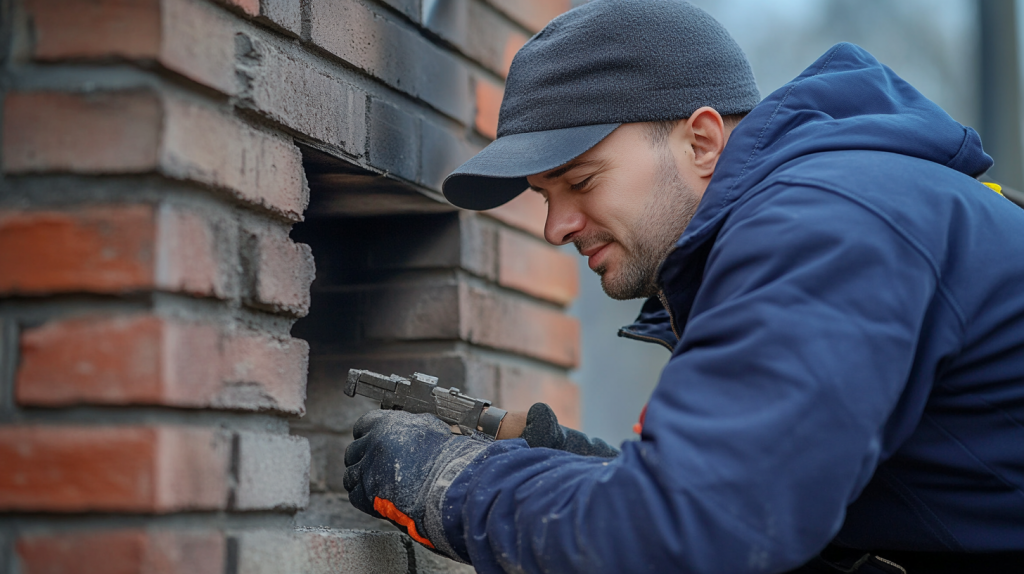
Let’s discuss why you should get your chimney checked regularly. It’s not just a chore—it’s a big deal for your home’s safety.
- First up, chimney inspections help prevent fires. Over time, a substance called creosote builds up inside your chimney. This stuff is super flammable. If it gets too thick, it can catch fire and put your whole house at risk. A good inspection catches this problem early.
- Next, these check-ups make sure your chimney is still strong. Weather and use can wear it down over time. An inspector looks for any weak spots or damage that could lead to bigger issues.
- Lastly, inspections can spot hidden dangers. Things like cracks in the flue or blockages from bird nests aren’t always easy to see. But they can cause big problems if left alone. A thorough inspection finds these issues before they become real headaches.
Regular chimney inspections keep your home safe and warm. They’re a smart move for any homeowner.
Types of Chimney Inspections
Did you know there are different levels of chimney inspections? Let me explain them to you in a way that’s easy to understand.
1. Level 1
Level 1 is your basic check-up. It’s like a quick once-over for your chimney. The inspector looks at all the parts they can easily see and reach. They’ll check if everything looks okay and works right. You’d usually get this if you use your fireplace regularly and haven’t had any problems.
2. Level 2
Level 2 goes a bit deeper. It’s more thorough and uses some cool tech. The inspector might use a special camera to look inside your chimney. They’re looking for hidden problems you can’t see outside. You’d get this kind of inspection if you’ve changed your heating system or if you’ve had a chimney fire.
3. Level 3
Level 3 is the big one. It’s only done when there might be a serious problem. The inspector might need to remove parts of your chimney or some of its walls. It’s not common, but it’s important if there’s a major safety concern.
Each level builds on the one before it. The goal is always the same – to keep your home safe and your chimney working well.
Preparing for Your Chimney Inspection
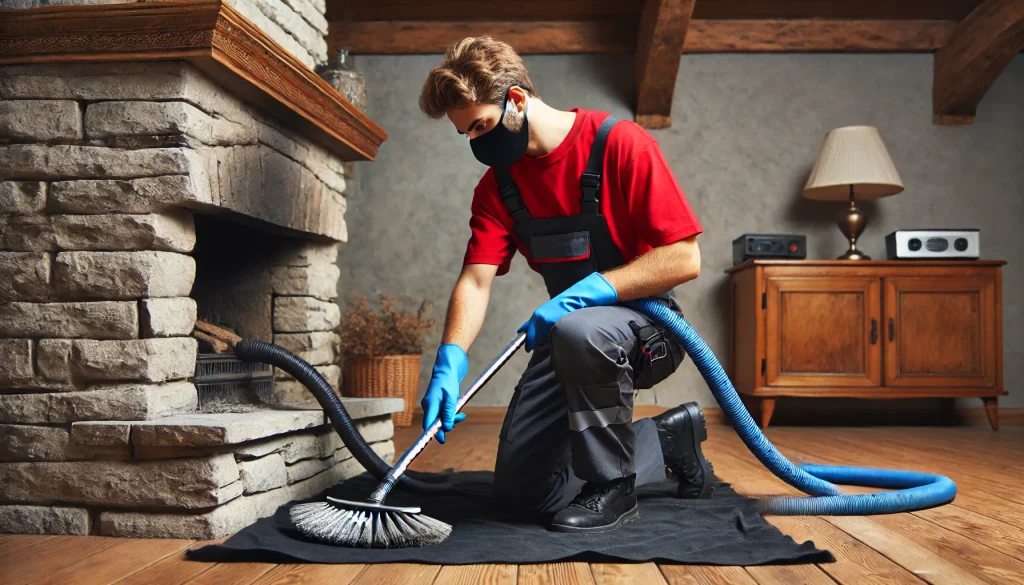
Getting ready for a chimney inspection is easier than you might think. Let me walk you through some simple steps to make the process smooth for you and the inspector.
- First things first, clear the space around your fireplace. Move any furniture, rugs, or decorations that might be in the way. This gives the inspector room to work and keeps your stuff safe from any soot or debris.
- Next, take a look inside your fireplace. If there’s any unburned wood left over from your last fire, go ahead and remove it. Give the firebox (that’s the part where you build your fire) a quick clean. This helps the inspector see everything.
- Remember about access to your chimney. If you have any tall furniture or plants near the outside walls where your chimney is, move them aside. The inspector might need to check things from the outside, too.
These simple steps can make a big difference. They help the inspector do a thorough job without any hiccups and show that you’re on top of things as a homeowner. It’s a win-win!
What to Expect During the Chimney Inspection

Have you ever wondered what happens when the chimney inspector comes to your home?
Let me give you a peek behind the curtain.
- First, don’t worry about mess. The inspector will set up a protective area around your fireplace. They will use special tarps to keep soot and debris from getting on your floors or furniture. It’s like they’re creating a little work zone right in your living room!
- Next, you’ll see some cool tools come out. They often use a special vacuum that catches dust and soot, keeping the air clean while they work. You might also spot a long, flexible rod with a brush on the end. This is for cleaning the inside of your chimney.
- The most interesting part? Many inspectors now use a special camera called a Chim-Scan. It’s like a tiny explorer that goes up your chimney, looking for hidden problems. The inspector can see everything on a small screen, like watching a movie of the inside of your chimney.
Throughout this, the inspector will look closely at every part of your chimney, checking for signs of wear and tear or potential problems. It’s pretty fascinating to watch if you’re interested!
Step-by-Step Chimney Inspection Process
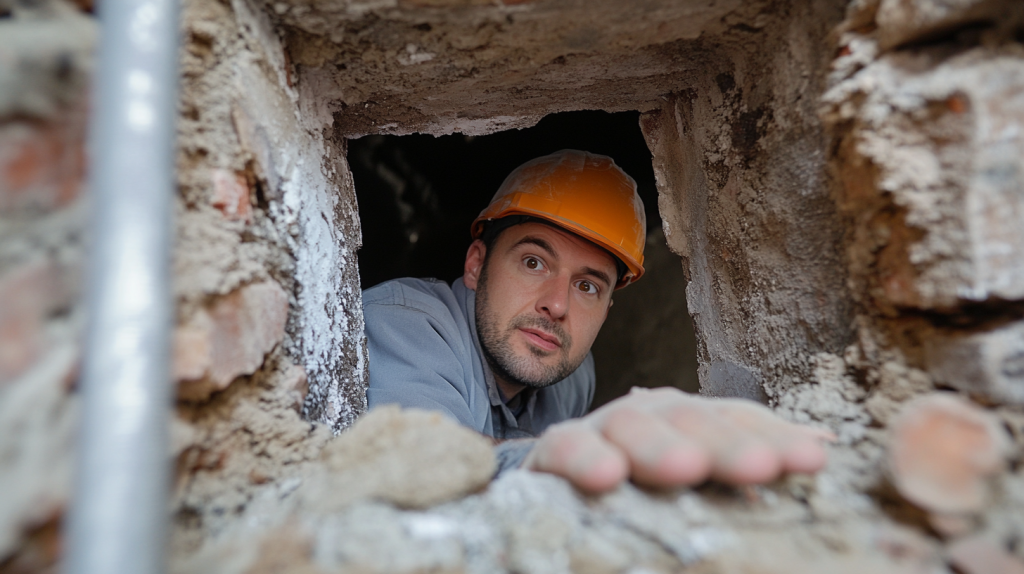
Let’s walk through what the inspector looks at during a chimney check-up. It’s more detailed than you might think!
- First, they’ll examine your damper, the metal plate that opens and closes your chimney. They’ll make sure it opens and shuts smoothly, as a stuck damper can cause all sorts of problems.
- Next up is the flue. This is the long tube that carries smoke out of your house. The inspector checks for any cracks or gaps. Even small ones can be dangerous
- .Then comes the firebox – where you build your fires. They’ll look for any signs of wear or damage here. Cracks in the firebox can let heat escape into your walls, which isn’t good.
- The smoke chamber, which is right above your fireplace, also gets a thorough once-over. It needs to be smooth to guide smoke up the chimney properly.
- Throughout all of this, the inspector is on the lookout for creosote buildup. This is that flammable stuff I mentioned earlier. They’ll also check for any structural issues, like bricks coming loose.
It might seem like a lot, but each step is important for keeping your home safe and warm.
Post Chimney Inspection

So, the inspector’s done their job. What happens next? Let me explain the important things that follow a chimney inspection.
- First up, you’ll get a report. This isn’t just any old piece of paper – it’s a full rundown of what the inspector found. They’ll point out any problems they spotted and suggest fixes. It’s like a health check-up for your chimney, complete with doctor’s orders!
- Now, here’s the key part: don’t ignore this report. If the inspector says something needs fixing, it’s best to take care of it. These folks know their stuff, and their advice can help avoid big problems down the road.
- Next, you might need to schedule some repairs. The report will tell you what needs doing. It could be something small like a bit of cleaning, or something bigger like fixing cracks. Either way, it’s smart to get on it quickly.
- Lastly, the inspector might give you tips on keeping your chimney in good shape. These could include how often to clean it or what kind of wood to burn. Following these tips can save you hassle (and money) in the long run.
Remember, caring for your chimney is about more than staying warm—it’s about keeping your home safe.
Finding a Certified Chimney Sweep
Let’s talk about finding the right person to inspect your chimney. It’s not as simple as picking the first name you see online. Here’s what you need to know to make a smart choice:
- First off, look for a certified chimney sweep. These folks have special training and know all the ins and outs of chimney care. It’s like choosing a doctor – you want someone who knows their stuff, right?
- Next, check if they’re bonded and insured. This might sound boring, but it’s super important. It means you’re protected if anything goes wrong during the inspection or cleaning.
- Now, don’t just take their word for it. Ask to see their credentials. A good chimney sweep will be happy to show you proof of their qualifications.
- Lastly, take some time to read reviews from other homeowners. What do people say about their work? Are they on time? Do they explain things well? These reviews can tell you a lot about what to expect.
Remember, your chimney plays a big role in keeping your home safe. Picking the right person to care for it is worth extra effort.
Conclusion
Wrapping up, regular chimney inspections are key to a safe and cozy home. We’ve covered a lot, from the types of inspections to what happens during and after.
Remember, your chimney does more than look nice – it keeps your family safe from fire hazards and harmful gases.
Don’t wait for problems to pop up. Schedule an inspection with a certified chimney sweep today. It’s a small step that can prevent big issues down the road.
If you find this guide helpful, why not share it with a friend or neighbor?
Let’s keep our communities safe, one chimney at a time.
Stay warm and safe, everyone!
Frequently Asked Questions
Should Chimneys Be Inspected Annually?
Yes, it’s recommended to have your chimney inspected once a year. This helps catch potential issues early and ensures your chimney is safe. Even if you don’t use it often, annual checks are important.
How Often Does a Chimney Need to Be Cleaned?
Chimneys should be cleaned when there’s 1/8 inch of soot buildup. For most homes, this means cleaning once a year. If you use your fireplace often, you might need more frequent cleanings. It’s best to ask a professional during your annual inspection.
Do You Need a Certificate for A Chimney?
In most areas, you don’t need a specific certificate for your chimney. However, some insurance companies or local regulations might require proof of recent inspection or cleaning. It’s always a good idea to keep inspection reports for your records.





